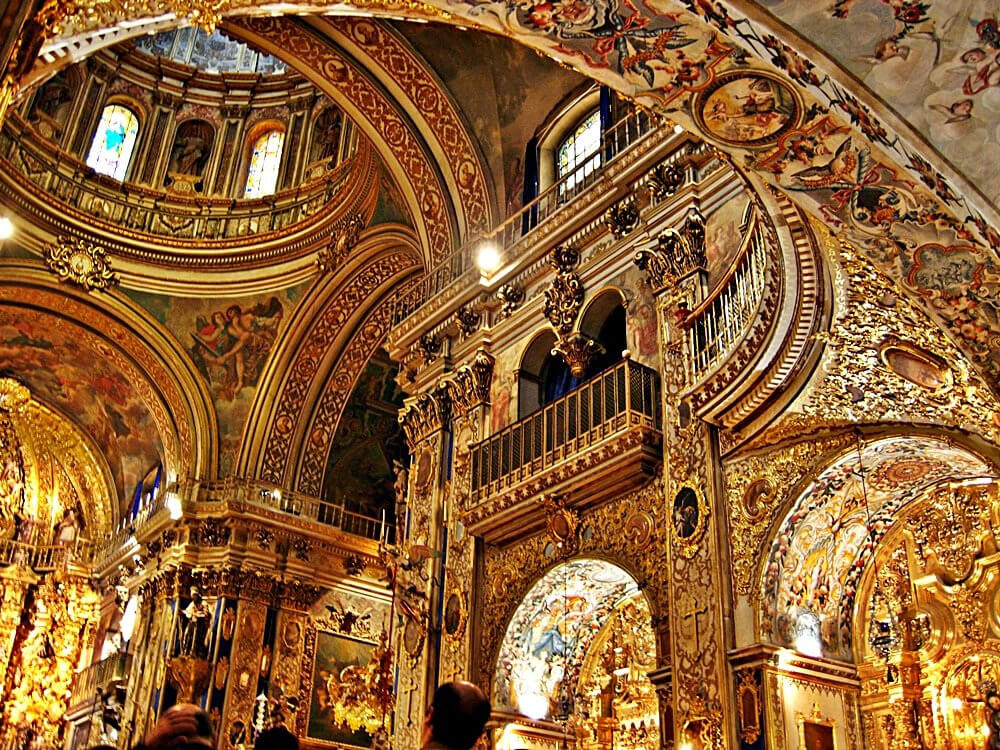Table Of Content

They were made of multiple layers of lacquer, then incised with motifs in-filled with colour and gold. Chinese, but also Japanese lacquer panels were also used by some 18th century European carpenters for making furniture. In order to be produced, Asian screens were dismantled and used to veneer European-made furniture. Baroque architecture, architectural style originating in late 16th-century Italy and lasting in some regions, notably Germany and colonial South America, until the 18th century. It had its origins in the Counter-Reformation, when the Catholic Church launched an overtly emotional and sensory appeal to the faithful through art and architecture. Complex architectural plan shapes, often based on the oval, and the dynamic opposition and interpenetration of spaces were favoured to heighten the feeling of motion and sensuality.
Central Europe
Their legacy lives on through the music of Antonio Vivaldi, Claudio Monteverdi, Arcangelo Corelli, and their expressive scores. In order to create music on par with the classical Greek and Roman dramas of the past, Italian composers implemented new ways of playing and introduced new aspects of composition. Seeking dynamics and emotion in the place of regal static-ness, they developed a new musical language that enabled great dramatic interpretation. Most of this musical language is still used to this day, and also forms such as cantata, concerto, sonata, sinfonia, and opera originated in the baroque period. Generally, they were concerned with the human subjects or subjects and depicted similar scenes. The renaissance spheres of power still dominated the art directions of their cultures, and, accordingly, most of the commissions were portraits of royals, religious scenes, depictions of royal life and society.
Music
Another key factor is the existence of the Jesuitical architecture, also called "plain style" (Estilo Chão or Estilo Plano)[74] which like the name evokes, is plainer and appears somewhat austere. The first building in Rome to have a Baroque façade was the Church of the Gesù in 1584; it was plain by later Baroque standards, but marked a break with the traditional Renaissance façades that preceded it. The interior of this church remained very austere until the high Baroque, when it was lavishly ornamented. The twisted column in the interior of churches is one of the signature features of the Baroque.
French Baroque and French Classicism
It is often characterized as the final phase of the Baroque, but the style differs from its predecessor in its intimate scale, asymmetry, lightness, elegance, and exuberant use of curving natural forms in ornamentation. Rococo painting in France, for example, began with the graceful, gently melancholic paintings of Antoine Watteau, culminated in the playful and sensuous nudes of François Boucher, and ended with the freely painted genre scenes of Jean-Honoré Fragonard. French Rococo painting in general was characterized by easygoing, lighthearted treatments of mythological and courtship themes, the introduction of the family as subject, rich and delicate brushwork, a relatively light tonal key, and sensuous colouring. The Swiss-born art historian Heinrich Wölfflin (1864–1945) started the rehabilitation of the word Baroque in his Renaissance und Barock (1888); Wölfflin identified the Baroque as "movement imported into mass", an art antithetic to Renaissance art. He did not make the distinctions between Mannerism and Baroque that modern writers do, and he ignored the later phase, the academic Baroque that lasted into the 18th century.
Baroque gardens were built by Kings and princes in Germany, the Netherlands, Austria, Spain, Poland, Italy and Russia until the mid-18th century, when they began to be remade into by the more natural English landscape garden. The Baroque period was a golden age for theatre in France and Spain; playwrights included Corneille, Racine and Molière in France; and Lope de Vega and Pedro Calderón de la Barca in Spain. In France, theatre and opera also became a key element of Louis XIV's cultural policy, which was used to control the nobility and express his power and magnificence. In the early 18th century, the theatre building itself acquired new importance as proof of courtly, civic or technological power. The resulting new buildings across Europe established the theatre in the form we know today.
So much so that many art history scholars have argued that Baroque art was simply the end of the Renaissance and never existed as a cultural or historical phenomenon. The term Baroque, derived from the Portuguese ‘barocco’ meaning ‘irregular pearl or stone’, refers to a cultural and art movement that characterized Europe from the early seventeenth to mid-eighteenth century. Due to its exuberant irregularities, Baroque art has often been defined as being bizarre, or uneven. Appreciation for the Baroque reappeared with the rise of Postmodernism, a movement that questioned Modernism (the status quo after WW2), and which promoted the inclusion of elements of historic styles in new designs, and appreciation for the pre-Modernist past. Born in the Viceroyalty of New Spain[151] but later settled in Spain, Juan Ruiz de Alarcón is the most prominent figure in the Baroque theatre of New Spain.
History of Baroque architecture
Contending with the spread of the Protestant Reformation, the Roman Catholic Church, after the Council of Trent (1545–63), adopted a propagandist program in which art was to serve as a means of stimulating the public’s faith in the church. Whereas a naturalistic treatment rendered the religious image more accessible to the average churchgoer, dramatic and illusory effects were used to stimulate devotion and convey the splendour of the divine. The second tendency was the consolidation of absolute monarchies—Baroque palaces were built on a monumental scale to display the power of the centralized state, a phenomenon best displayed at Versailles.
In the 18th century sculptural altarpieces began to be replaced by paintings, developing notably the Baroque painting in the Americas. Similarly, the demand for civil works, mainly portraits of the aristocratic classes and the ecclesiastical hierarchy, grew. The main influence was the Murillesque, and in some cases – as in the criollo Cristóbal de Villalpando – that of Valdés Leal. It highlight Gregorio Vásquez de Arce in Colombia, and Juan Rodríguez Juárez and Miguel Cabrera in Mexico. In the Hispanic Americas, the first influences were from Sevillan Tenebrism, mainly from Zurbarán —some of whose works are still preserved in Mexico and Peru— as can be seen in the work of the Mexicans José Juárez and Sebastián López de Arteaga, and the Bolivian Melchor Pérez de Holguín.
As a result, Flemish artists painted both Counter-Reformation religious subjects and landscapes, still lifes, and genre works that still drew upon the Northern European tradition. Many scholars think it was derived from the Portuguese barrocco, meaning an imperfect or irregularly shaped pearl. And some, like the philosopher Jean-Jacques Rousseau thought it was derived from the Italian barocco, a term used to describe an obstacle in formal logic in the medieval period. In growing usage the term originally contained negative connotations, the artwork within its cadre viewed as bizarre and sometimes ostentatious.

The heavily gilded dome is representative of the ways Baroque churches encouraged visitors to look upwards. The third tendency was a new interest in nature and a general broadening of human intellectual horizons, spurred by developments in science and by explorations of the globe. These simultaneously produced a new sense both of human insignificance (particularly abetted by the Copernican displacement of the Earth from the centre of the universe) and of the unsuspected complexity and infinitude of the natural world.
In 1630 he was appointed court painter to the Princess of Orange in 1630 and, due to royal connections, became the painter for the English court and was knighted by Charles I, the King of England, in 1632. Flemish artists also painted genre scenes, and the best known were Adriaen Brouwer, Jacob Jordaens, and David Teniers the Younger. Bartolomé Esteban Murillo developed the estilo vaporiso, or vaporous style, that used a delicate palette, softened contours, and a veiling effect of silver or golden light.
Gehry called him, "one of my greatest influences." Similarly, contemporary artists including Jenny Saville, Lisa Yuskavage, and John Currin, reflect the continuing impact of the works of Rembrandt and Rubens. This extravagant style included layered, formal, highly decorated interiors that included such elements as bronze sculptures; intricate tapestries; sculpted wood mirrors, moldings, and paneling; elaborately painted ceilings; crystal chandeliers; and gilded everything. Baroque interior design is the style of decor style of the Baroque period of architecture, art, and design that developed in the 17th and first half of the 18th century in Italy and France. In art criticism the word Baroque came to be used to describe anything irregular, bizarre, or otherwise departing from established rules and proportions.
Baroque art and architecture became fashionable in the interwar period, and has largely remained in critical favor. His High Baroque style, known for its rich color, sensual exuberance, and movement informed both his religious painting as in Descent from the Cross (1614) and his non-religious subjects like the Judgment of Paris (1636). His female nudes of mythological and Biblical women were particularly renowned and influential, as they combined sensuality with a complexity of allegory and allusion. Rubens' most noted student was Anthony van Dyck who became famous later primarily for his portraits, marked by a courtly elegance.
9 Characteristics of Baroque Architecture (16th-18th Century) - The Collector
9 Characteristics of Baroque Architecture (16th-18th Century).
Posted: Tue, 10 Aug 2021 07:00:00 GMT [source]
Rivaling with the Dutch and Spanish artists of the caliber of Diego Velazquez, Italian Baroque painters were imbued with the legacy of Renaissance and Mannerist style. Instead, it consisted of many great schools and artists across Europe throughout the 150 or so years of the Baroque Era encompassing a wide range of styles. Additionally, the quantity of genius-level artistry coming from different countries, schools, styles, and fields injects an added level of subjectivity to what Baroque may mean for an observer of the art movement.
With their ornate costumes, complex stage sets and ingenious machinery, these performances created wonder and awe. Written by Jean-Baptiste Lully for the French court of Louis XIV (reigned 1643 – 1715), the opera Atys was such a favourite with the King that it became known as "The King's Opera". Our collection includes a pen and ink design for the costume of the character Hercules in Atys. He is shown in a ballet pose, wearing a Roman-style costume, and identified by his club and lion skin. Not only does it serve as a lasting reminder of an important moment in history, but studying its impact explains the desires and ideals of Europeans at that time.

No comments:
Post a Comment